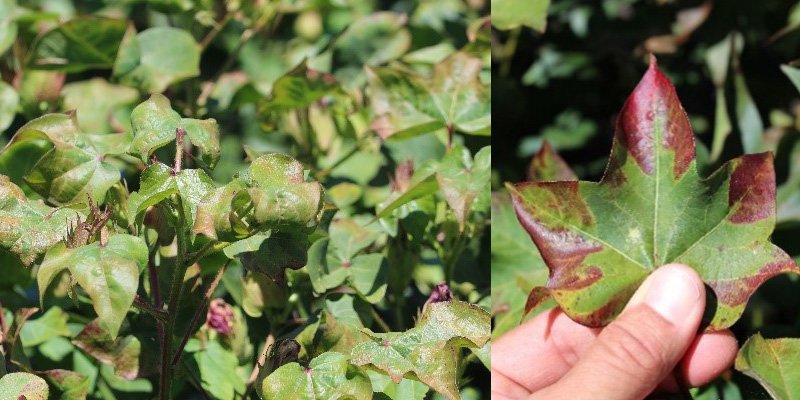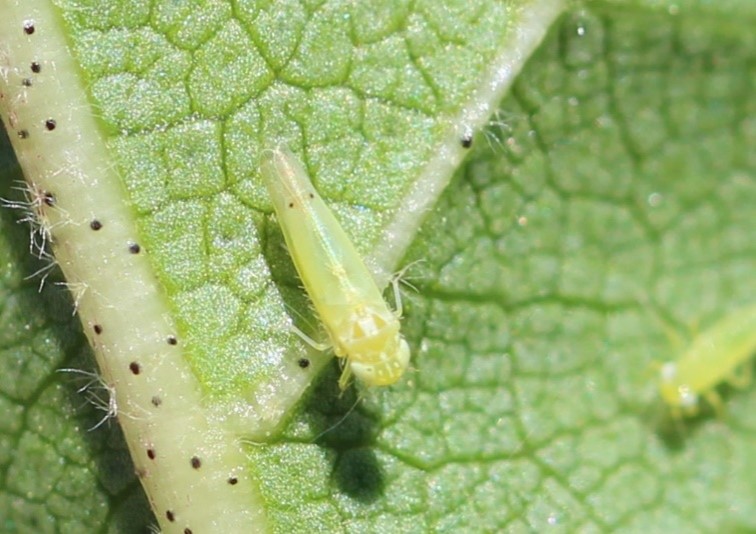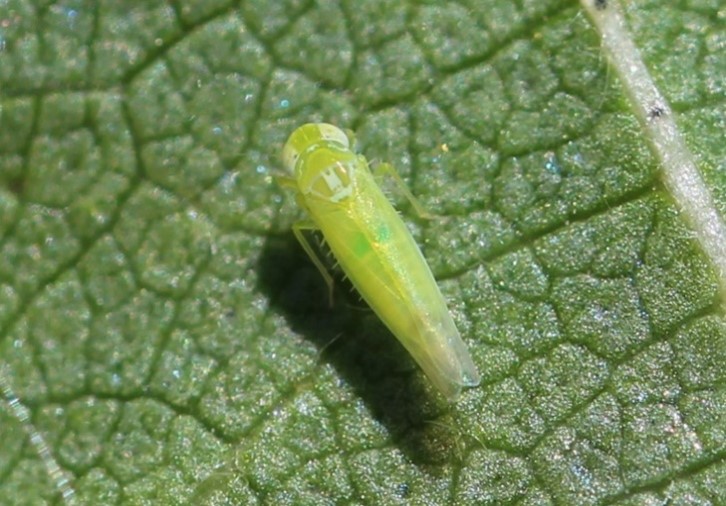Leafhoppers (also known as jassids) rarely cause damage in cotton, so some unusual symptoms (leaf chlorosis that presented a little like cotton bunchy top disease) across several cotton fields in Queensland’s Burnett region last month that appeared to be associated with leafhoppers had both taxonomists and virologists searching for an explanation.

Canopy and leaf damage to cotton
Both the damage and leafhoppers present shared many of the characteristics of Indian Cotton Leafhopper, an exotic species that is considered a biosecurity threat to Australia’s cotton industry.
After detailed diagnostic work and DNA analysis by the Queensland Department of Agriculture and Fisheries, not one but two species were confirmed from the affected fields. Among the more familiar cotton leafhopper, Amrasca terraereginae was lucerne leafhopper, Austroasca alfalfa.

Cotton leafhopper – common in Australian crops, but rarely causes economic damage
Although not a common visitor to cotton fields, lucerne leafhopper is known to cause leaf chlorosis and burn in soybeans and peanuts and is thus the prime suspect for this unusual crop damage that occurred over several hundred hectares. Glasshouse experiments will be conducted over the next few months to confirm if this species was indeed the culprit.

Lucerne leafhopper – the suspected culprit
Full marks to the agronomist checking these fields who reported their concerns regarding the damage, allowing professional identification of the insects present to rule out a potential biosecurity threat.
First reported in CottonInfo’s e-news on 28 February 2022.

Hi paul, we have the same jassid induced chlorosis on cotton at Comet in central Qld.
It started around a no mans land that is inhabited with volunteer cotton.